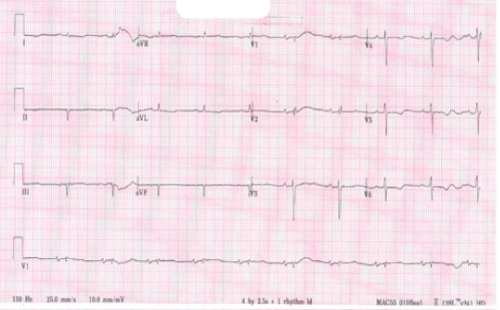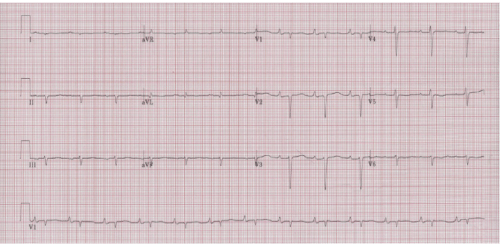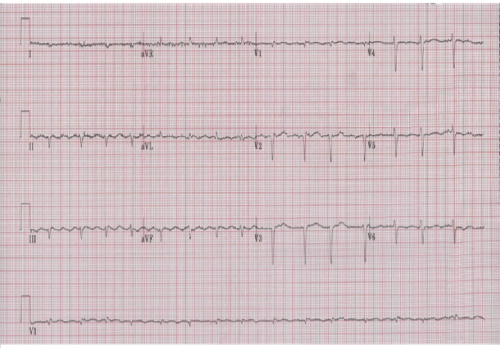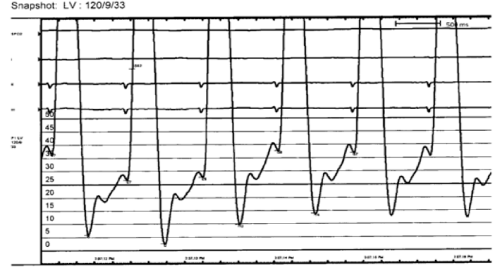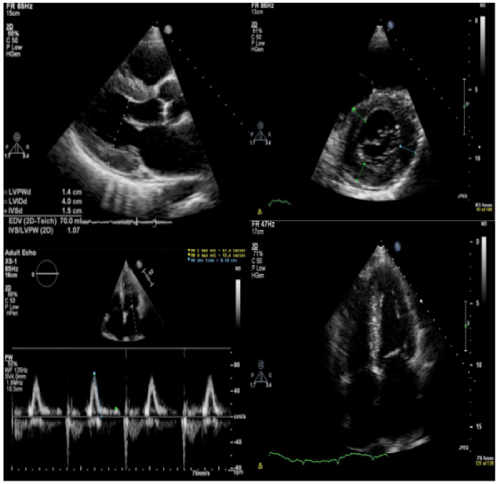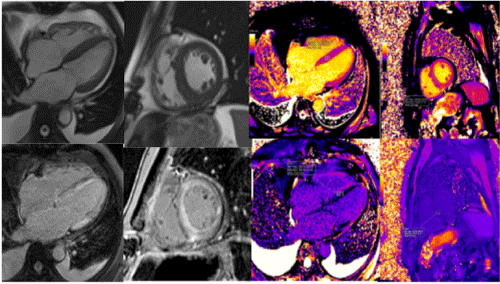
Annals of Cardiology and Vascular Medicine
HOME /JOURNALS/Annals of Cardiology and Vascular Medicine- Case Report
- |
- Open Access
- |
- ISSN: 2639-4383
Measuring the Left Ventricular End - Diastolic Pressure: Out of Fashion But Still of Real Value
- Shailesh Dalvi*;
- ST7 Cardiology, Liverpool Heart and Chest Hospital NHS, Thomas Drive, Liverpool, L14 3PE, UK.
- Kaneez Makhdoom;
- F2 Cardiology, Liverpool Heart and Chest Hospital NHS, Liverpool, UK.
- Rod Stables;
- Consultant Cardiologist, Liverpool Heart and Chest Hospital NHS, Liverpool, UK.
- Victoria Pettemerides
- Consultant Cardiologist, Liverpool Heart and Chest Hospital NHS, Liverpool, UK.

| Received | : | Jan 25, 2022 |
| Accepted | : | Feb 17, 2022 |
| Published Online | : | Feb 22, 2022 |
| Journal | : | Annals of Cardiology and Vascular Medicine |
| Publisher | : | MedDocs Publishers LLC |
| Online edition | : | http://meddocsonline.org |
Cite this article: Dalvi S, Makhdoom K, Stables R, Pettemerides V. Measuring the Left Ventricular End -Diastolic Pressure: Out Of Fashion But Still of Real Value. Ann Cardiol Vasc Med. 2022; 5(1): 1058.
Abstract
A 69-year-old man with previous coronary artery bypass grafting and recent native vessel percutaneous coronary intervention presented with progressive breathlessness. Left Heart Catheterization (LHC) showed no flow-limiting coronary disease but an elevated end-diastolic pressure with a pattern suggestive of restrictive cardiomyopathy. He was subsequently diagnosed with AL Amyloid with cardiac involvement.
Case presentation
A 69-year-old man was admitted via a nearby hospital with progressive breathlessness having had Percutaneous Coronary Intervention (PCI) to the Right Coronary Artery (RCA), for a presumed acute coronary syndrome event, one month prior. Serial Troponin T levels were mildly elevated (34 ng/ml and 58 ng/ml). Pro-B type natriuretic peptide level was significantly elevated at 9605 ng/l (<400 ng/L). Physical examination revealed normal heart sounds, mild pedal oedema, and decreased air entry at both lung bases.
Learning objectives
- Measuring end - diastolic pressure during LHC is helpful in identifying cause of cardiac symptoms in absence of significant coronary artery disease
- Cardiac amyloidosis should be considered where there is a suspicion of Restrictive Cardiomyopathy (RCM).
- Constrictive Pericarditis (CP) should be differentiated from RCM, as curative surgery is available for CP.
Past medical history
The patient had a history of Coronary Artery Bypass grafting (CABG) 13 years ago and a presumed recent presentation with a non-ST elevation MI treated with PCI to the native right coronary artery. A CT coronary angiogram had demonstrated a patent LIMA graft, but no other grafts were identified. An echocardiogram at that time reported moderate LV systolic impairment but diastolic function was not assessed. Other comorbidities were hypertension, hypercholesterolemia, polymyalgia rheumatica, Paget’s disease, and obstructive sleep apnoea.
Differential diagnosis
The suspected diagnosis was decompensated heart failure secondary to ischaemic cardiomyopathy, or a further acute coronary syndrome caused by stent thrombosis.
Investigations
An initial Electrocardiogram (ECG) showed sinus rhythm with 1st degree AV block, inferior q waves, poor R wave progression, and low voltage QRS complexes with QRS duration of 90ms (Figure 1a,b,c). A Chest radiograph showed mild cardiomegaly and small bilateral pleural effusions.
A coronary angiogram showed that the native RCA stent was patent and there was no new occlusive disease. A Left Ventriculogram Demonstrated an End-Diastolic Pressure (LVEDP) of 33 mmHg (normal range 4-7 mmHg) and left ventricular diastolic pressure variation with respiration (Figure 2). Based on this the patient went on to have further investigations for cardiac amyloidosis.
A repeat Transthoracic Echocardiogram (TTE) showed mild concentric left ventricular hypertrophy with a maximum wall thickness of 15mm. There was globally reduced biventricular systolic dysfunction (LV ejection fraction 45%) and biatrial dilatation (Figure 3). TDI velocities were reduced indicating reduced longitudinal function: average LV S’ 4.9cm/sec, average E’ 3.1 cm/sec, lateral A’3.9cm/sec. Although Transmitral inflow velocities were not significantly elevated, the E: A ratio was 4.95 and the E deceleration time was reduced at 100msec (Figure 3). E: E’ was 21.7 indicating increased left atrial pressure. The findings indicated restrictive left ventricular filling. There was no significant valvular disease. Cardiac Magnetic Resonance Imaging (MRI) showed increased LV mass index, late gadolinium enhancement in a subendocardial pattern, elevated native T1 values and increased Extra Cellular Volume (ECV) of 49% (Figure 4). A 99(m) Tc-DPD scintigraphy showed no cardiac uptake (Perugini score 0). A modest elevation in lambda light chains was detected (212.8 mg/L, normal 5.7-26) but there was a normal serum immunoglobulin assay and normal urine immunofixation. Bone marrow biopsy showed >10% clonal plasma cells. Endomyocardial biopsy was consistent with amyloid demonstrating apple green dichroism under crossed beams of polarized light when stained by Congo red. A diagnosis of AL amyloid was made.
Management
Management of AL amyloid focuses on treatment of the plasma cell dyscrasia with chemotherapy and supportive treatment by way of fluid balance and anticoagulation if atrial fibrillation is identified.
This patients’ fluid overload symptom responded to oral diuretics. ACE inhibitor and beta-blocker were not tolerated due to significant fatigue, which is often exacerbated by beta-blockers in amyloid, and presumed autonomic involvement leading to symptomatic postural hypotension. He received chemotherapy by way of cyclophosphamide, Bortezomib (Velcade) and dexamethasone. Atrial fibrillation (Figure 1c) was treated with amiodarone and anticoagulation.
Follow up
Almost one year on from the initial diagnosis, patient has had an excellent light chain response to chemotherapy. He developed Gastrointestinal (GI) symptoms and a biopsy has confirmed GI tract amyloid. Postural symptoms, fatigue and progressive breathlessness have continued. Light chains continue to be monitored but no further chemotherapy is required at this stage. Ongoing care will continue to be symptomatic and supportive management.
Discussion
Traditionally, measuring LVEDP at left heart catheterization was done as regularly during the coronary angiogram but is now less frequently performed. At many junctures, this provides an opportunity to obtain vital diagnostic information, especially in cases featured with impaired ventricular function.
Defining Restrictive Cardiomyopathy (RCM) is always illustrated with hemodynamic function rather than morphological features as attributed in hypertrophic or dilated cardiomyopathy [1] RCM is characterized by impaired ventricular filling with normal wall thickness and normal or reduced diastolic volumes. The signs and symptoms of heart failure are often present. In such circumstances with features of RCM, Cardiac amyloidosis should be suspected [2]. Owing to enhanced awareness, advancements in imaging tools and simplified non-biopsy diagnostic algorithms [3] cardiac amyloidosis is more frequently detected and diagnosed. It is vital to determine the form of the amyloid present as this affects treatment options and prognosis.
The presence of near-normal systolic function with elevated filling pressures in ventricles is a characteristic hemodynamic pattern of RCM. In RCM, significant shortening of the ventricular excursion during diastole results in a reduced inflow of blood into the ventricular cavity. The diastolic pressure gets elevated abnormally to maintain an adequate stroke volume with this stiffened ventricle. This manifests in the form of congestive symptoms and the characteristic hemodynamic signs [3,4]. Echocardiography serves as an excellent screening tool to assess filling pressures, however, the LVEDP measurement using invasive left heart catheterization can also play a key role in detecting and diagnosing the RCM as demonstrated in this case.
In RCM, there is a simultaneous drop in left ventricular pressure and right ventricular pressure during inspiration. Constrictive Pericarditis (CP) contrastingly features discordance of the ventricle, with an increase in the Right ventricular pressure and a decrease in left ventricular pressure during inspiration. The ventricular pressure markedly drops at the onset of diastole with a rapid elevation in early diastole followed by an abrupt plateau giving rise to the classically described ‘square root sign’ [5,6]. The RCM and CP have shown similar clinical presentation; hence, it is crucial to differentiate CP from RCM as CP gets effectively treated with curative surgery.
Figure 1A: ECG demonstrating sinus rhythm with first-degree AV block (PR interval 200ms), pathological Q waves in the inferior leads, T inversion in lateral leads and poor R wave progression with low voltage QRS complexes.
Figure 2: LV pressure tracing.
Showing left Ventricular pressure tracing with an end-diastolic pressure of 33mmHg (normal range 4–7 mmHg) and left ventricular diastolic pressure variation with respiration.
Figure 3: Transthoracic Echocardiogram. Top panel: Parasternal long axis and short axis demonstrating concentric left ventricular hypertrophy. Bottom left: Transmitral Doppler demonstrating restrictive LV filling pattern. E: A 4.95, MV deceleration time 100msec. Bottom right: Apical 4 chamber view demonstrating biatrial dilatation.
Figure 4: Top panel: Vertical long axis and mid short axis views of bSSFP cine and native T1 mapping sequences.
Bottom panel: Late gadolinium phase of inversion recovery sequence and T1 mapping 15’ post gadolinium administration in the same imaging planes. There is diffuse myocardial enhancement in the left ventricle, right ventricle and in the atrial walls. Native T1 times are long (1170 ms) with abnormal gadolinium kinetics. ECV was 49%. Normal ECV values of 25.3 ± 3.5% [1.5 T] have been reported in healthy individuals [7].
Conclusion
Although the pivotal role of elevated LVEDP in diagnosing restrictive patterns is validated and evidenced by various non-invasive investigations. The right and left heart studies are universal quantified practice and routinely utilized in managing advanced heart failure and pulmonary hypertension, however, the invasive LVEDP is often under-utilized at the time of coronary angiography for acute coronary syndrome. Our case was transferred from a nearby district hospital as a possible acute coronary syndrome for the second time in a short span. Our case highlights the importance of LVEDP assessment in this setting especially when there are overt symptoms of heart failure and preserved systolic function.
References
- Elliott P, Andersson B, Bilinska Z, Zofia Bilinska, Franco Cecchi, et al. Classification of the cardiomyopathies: A position statement from the European Society of Cardiology Working Group on Myocardial and Pericardial Diseases. Eur Heart J. 2008; 29: 270-276.
- Gillmore JD, Maurer MS, Dispenzieri A, et al. Nonbiopsy diagnosis of cardiac transthyretin amyloidosis. Circulation. 2016; 133: 2404-2412.
- Geske JB, Anavekar NS, Nishimura RA, Jae K Oh, Bernard J Gersh, et al. Differentiation of Constriction and Restriction: Complex Cardiovascular Hemodynamics. J. Am. Coll. Cardiol. 2016; 68: 2329-2347.
- Nagueh Sherif F, Gillebert Thierry C, Paolo N Marino, Jae K Oh, et al. Recommendations for the evaluation of left ventricular diastolic function by echocardiography. Eur J Echocardiogr. 2009; 10: 165e93.
- Nishimura RA, Tajik A. Evaluation of Diastolic Filling of Left Ventricle in Health and Disease: Doppler Echocardiography Is the Clinician’s Rosetta stone. J. Am. Coll. Cardiol. 1997; 30: 8-18.
- Morgan BC, Guntheroth WG, Dillard DH. Relationship of pericardial to pleural pressure during quiet respiration and cardiac tamponade. Circ Res. 1965; 16: 493-498.
- Sado DM, Flett AS, Banypersad SM, Steven K White, Viviana Maestrini, et al. Cardiovascular magnetic resonance measurement of myocardial extracellular volume in health and disease. Heart (British Cardiac Society). 2012; 98: 1436-1441.
MedDocs Publishers
We always work towards offering the best to you. For any queries, please feel free to get in touch with us. Also you may post your valuable feedback after reading our journals, ebooks and after visiting our conferences.


